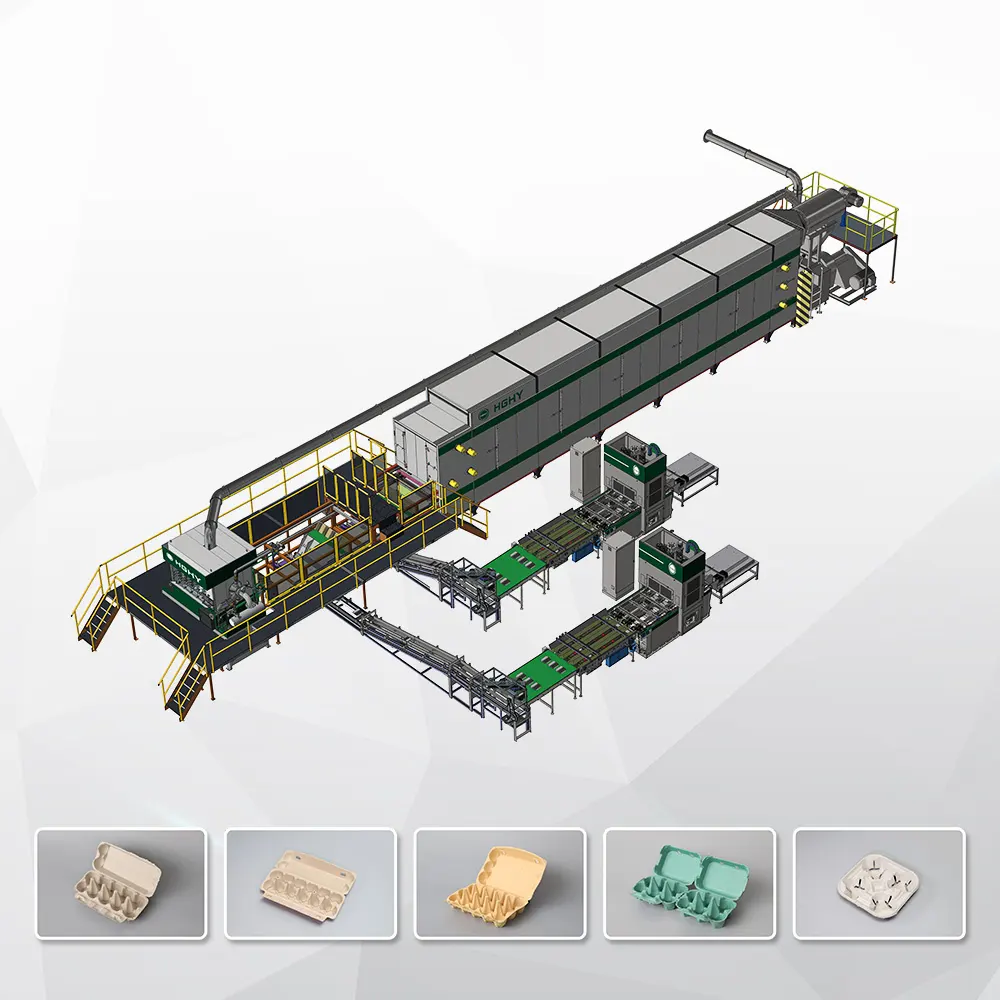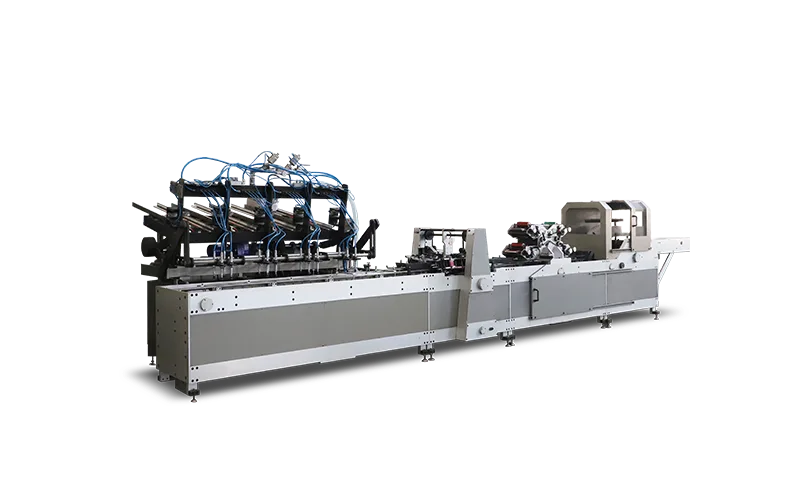In recent years, the adoption of pulp molding equipment has seen a significant surge, driven by a dual commitment to economic efficiency and environmental responsibility. This sustainable manufacturing process has become increasingly favored for its numerous benefits, aligning with the growing global emphasis on eco-friendly practices. This article explores the key factors propelling the preference for pulp molding equipment, shedding light on its environmental advantages, cost-effectiveness, and adaptability to meet evolving consumer demands. As businesses navigate the intricate landscape of environmental regulations and corporate social responsibility, the appeal of pulp molding equipment continues to grow, positioned as a pivotal player in the pursuit of sustainable and biodegradable manufacturing solutions.
Why do more and more people choose pulp molding equipment?
Pulp molding equipment has gained popularity for several reasons, driven by both economic and environmental considerations. Here are some factors that contribute to the increasing preference for pulp molding equipment:
1. Environmentally Friendly
Pulp molding is considered an eco-friendly and sustainable manufacturing process. It primarily uses recycled paper and other natural fibers as raw materials. This promotes the reuse of waste paper, reducing the overall environmental impact compared to traditional manufacturing methods that use non-renewable resources.
2. Biodegradability
Products made with pulp molding equipment are often biodegradable. This means that at the end of their life cycle, they can decompose naturally, reducing the burden on landfills and minimizing environmental pollution.
3. Reduced Carbon Footprint
Pulp molding generally requires less energy compared to other manufacturing processes. As a result, it contributes to a lower carbon footprint, helping companies and consumers meet sustainability goals and environmental regulations.
4. Cost-Effective
Pulp molding equipment can be cost-effective in the long run, especially for large-scale production. The use of recycled materials and the efficiency of the molding process contribute to lower production costs, making it an attractive option for businesses looking to cut expenses.
5. Versatility
Pulp molding equipment can be adapted to produce a wide range of products, such as packaging materials, trays, containers, and more. This versatility makes it suitable for various industries, from food packaging to electronics.
6. Consumer Demand
With increasing awareness of environmental issues and a growing demand for sustainable products, consumers are more likely to choose items made using eco-friendly processes. Pulp molded products align with this consumer preference.
7. Regulatory Compliance
Governments and regulatory bodies are becoming more stringent in their environmental regulations. Pulp molding, being an environmentally friendly process, may help companies comply with these regulations and avoid potential fines or restrictions.
8. Corporate Social
Responsibility (CSR): Many businesses are integrating sustainability into their corporate social responsibility initiatives. Choosing pulp molding equipment aligns with these initiatives, enhancing a company’s reputation and appeal to socially conscious consumers.
The shift towards pulp molding equipment is driven by a combination of environmental concerns, cost-effectiveness, regulatory compliance, and changing consumer preferences towards sustainable and biodegradable products. As technology continues to advance, and more innovations are made in the field, it’s likely that the popularity of pulp molding equipment will continue to grow.
What are the pulp molding equipment?
Pulp molding equipment refers to machinery and systems used in the pulp molding process, a sustainable and eco-friendly method for manufacturing various products from recycled paper or other fibrous materials. The primary types of pulp molding equipment include:

HGHY Egg Box Making Machine
The Egg Box Making Machine uses waste paper, old newspapers, etc. to make egg box. High efficient 6 layer dryer Automatic conveying and automatic hot pressing system; 3rd generation of mature and classical after press. Excellent performance of rotary forming technology; Unique patented hot pressing mechanism; Labeling printing machine is optional.

HGHY Egg Carton Printing Machine
It offers a range of customizable settings to accommodate different carton sizes, printing positions, and types of information to be printed.

HGHY Egg Carton Labeling Machine
These machines are typically designed to automatically apply labels to egg cartons as they move along a conveyor belt or a similar system.
1. Pulper:
– The pulper is used to break down recycled paper into pulp. This involves shredding and soaking the paper in water to create a slurry of fibers.
2. Molding Machine:
– Molding machines are crucial components in the pulp molding process. There are different types of molding machines depending on the specific products being manufactured. Common types include:
– Rotary Molding Machine: Uses rotating molds to shape the pulp into the desired form.
– Reciprocating Molding Machine: Uses reciprocating molds that move back and forth during the molding process.
– Thermoforming Molding Machine: Applies heat to the molds to help shape the pulp.
3. Mold Tooling:
– Mold tooling refers to the molds or dies that are used in the molding machines. These molds determine the final shape and structure of the pulp products.
4. Dryer System:
– After molding, the wet pulp products need to go through a drying process. Dryer systems, which can include conveyor belts and heated chambers, remove moisture from the molded items.
5. Hot Press:
– In some cases, a hot press may be used to further shape and consolidate the molded products. This process can enhance the strength and durability of the final items.
6. Trimming and Finishing Equipment:
– Trimming equipment is used to cut or trim excess material from the molded products. Finishing equipment may include additional processes to refine the surface or appearance of the final products.
7. Stacking and Packaging Systems:
– Once the molded products are dry and finished, stacking and packaging systems are used to organize and package the items for distribution.
8. Automation and Control Systems:
– Many modern pulp molding facilities incorporate automation and control systems to monitor and optimize the production process. This can include systems for pulp consistency control, temperature control, and overall process efficiency.
These components work together to transform recycled paper or other fibrous materials into a wide range of products, including packaging materials, trays, egg cartons, and more. The specific equipment used can vary based on the scale of production, the type of products being manufactured, and the level of automation implemented in the facility.
Choose HGHY
HGHY stands as a pioneering high-tech enterprise in China, committed to the research, development, and production of paper molding equipment. With close to three decades of practical experience in project management, our goal is to build cutting-edge machinery. Our service footprint extends across over 60 countries and regions worldwide, having successfully delivered over 1,000 sets of equipment and served more than 10,000 satisfied customers.
No experience required - Helps You Build a Factory
HGHY offers personalized, complimentary consulting services to clients. We assist in designing and planning your entire factory layout, tailor products to your specific requirements, and dispatch engineers to your country for equipment installation and troubleshooting. Additionally, we provide training and ongoing technical support, all backed by a lifetime service guarantee for HGHY equipment.
Our Cases
In conclusion, the paper pulp egg tray making machine is a sustainable and versatile solution for converting waste paper into useful, biodegradable packaging. Its straightforward working principle, eco-friendly raw materials, and the range of products it can produce make it an essential tool for businesses looking to reduce their environmental footprint and provide efficient packaging solutions. As the world continues to focus on sustainability, the egg tray making machine stands as a shining example of how innovation can lead to greener, more responsible packaging solutions.



